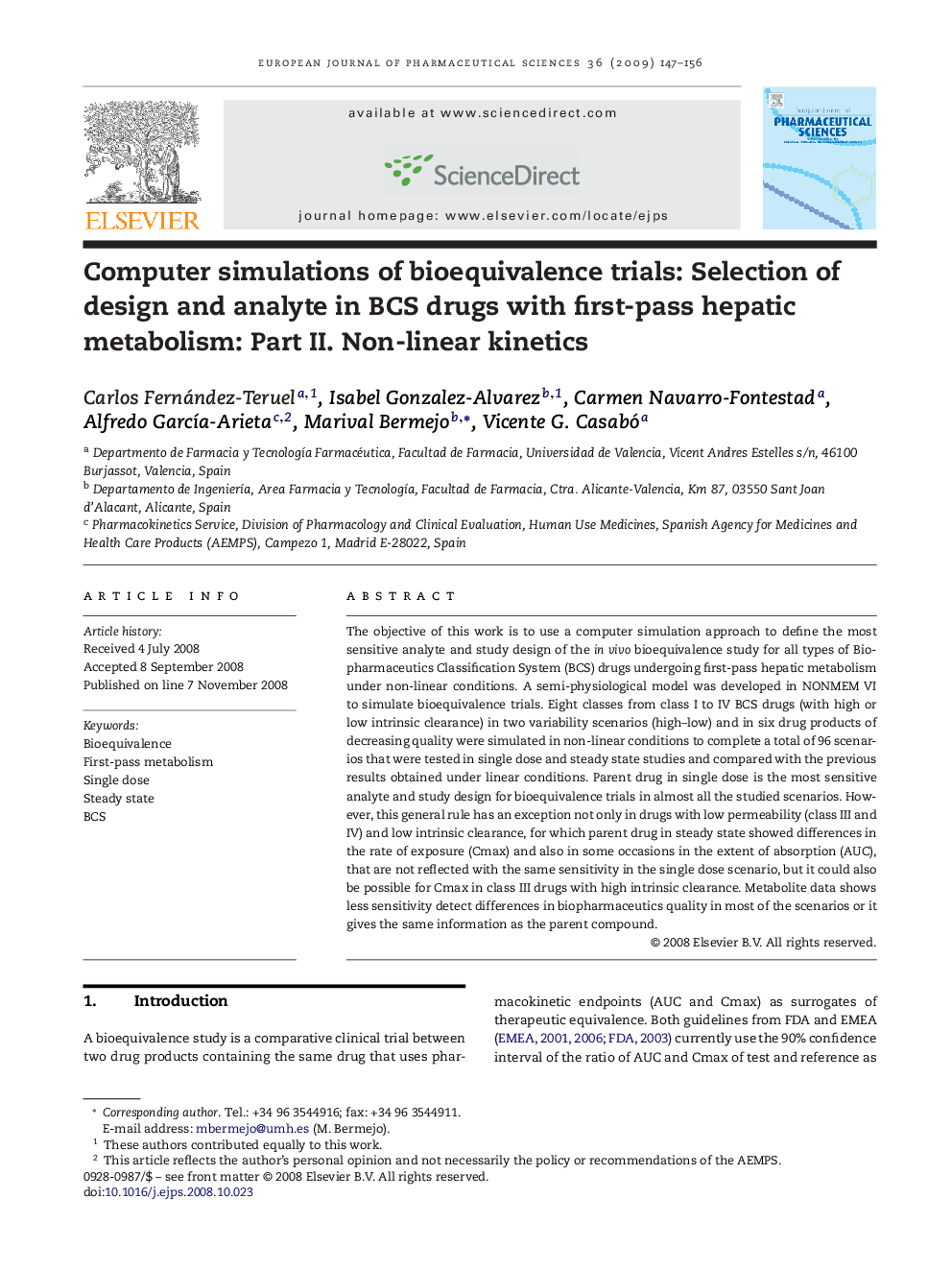| Article ID | Journal | Published Year | Pages | File Type |
|---|---|---|---|---|
| 2482245 | European Journal of Pharmaceutical Sciences | 2009 | 10 Pages |
The objective of this work is to use a computer simulation approach to define the most sensitive analyte and study design of the in vivo bioequivalence study for all types of Biopharmaceutics Classification System (BCS) drugs undergoing first-pass hepatic metabolism under non-linear conditions. A semi-physiological model was developed in NONMEM VI to simulate bioequivalence trials. Eight classes from class I to IV BCS drugs (with high or low intrinsic clearance) in two variability scenarios (high–low) and in six drug products of decreasing quality were simulated in non-linear conditions to complete a total of 96 scenarios that were tested in single dose and steady state studies and compared with the previous results obtained under linear conditions. Parent drug in single dose is the most sensitive analyte and study design for bioequivalence trials in almost all the studied scenarios. However, this general rule has an exception not only in drugs with low permeability (class III and IV) and low intrinsic clearance, for which parent drug in steady state showed differences in the rate of exposure (Cmax) and also in some occasions in the extent of absorption (AUC), that are not reflected with the same sensitivity in the single dose scenario, but it could also be possible for Cmax in class III drugs with high intrinsic clearance. Metabolite data shows less sensitivity detect differences in biopharmaceutics quality in most of the scenarios or it gives the same information as the parent compound.
